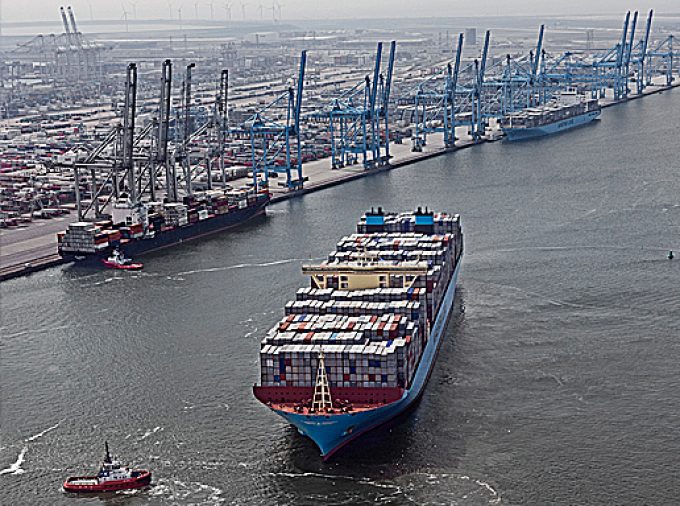TPM24: Shippers hope liner overcapacity will drive rates down – but...
Shippers hoping the burgeoning overcapacity in global liner trades may lead to a prolonged period ...
UPS: MULTI-MILLION PENALTY FOR UNFAIR EARNINGS DISCLOSUREWTC: PUNISHEDVW: UNDER PRESSUREKNIN: APAC LEADERSHIP WATCHZIM: TAKING PROFITPEP: MINOR HOLDINGS CONSOLIDATIONDHL: GREEN DEALBA: WIND OF CHANGEMAERSK: BULLISH CALLXPO: HEDGE FUNDS ENGINEF: CHOPPING BOARDWTC: NEW RECORDZIM: BALANCE SHEET IN CHECKZIM: SURGING
UPS: MULTI-MILLION PENALTY FOR UNFAIR EARNINGS DISCLOSUREWTC: PUNISHEDVW: UNDER PRESSUREKNIN: APAC LEADERSHIP WATCHZIM: TAKING PROFITPEP: MINOR HOLDINGS CONSOLIDATIONDHL: GREEN DEALBA: WIND OF CHANGEMAERSK: BULLISH CALLXPO: HEDGE FUNDS ENGINEF: CHOPPING BOARDWTC: NEW RECORDZIM: BALANCE SHEET IN CHECKZIM: SURGING

Despite carrier pleas that port services need to improve in order to efficiently handle ultra-large container vessels (ULCVs), it seems productivity is falling.
According to new analysis presented by Andy Lane, partner at CTI Consultancy, at this week’s TOC Container Supply Chain conference in Singapore, berth productivity at some 20 of the largest ports in Asia and Europe is in decline.
Using data gleaned from the Journal of Commerce’s berth productivity survey, and comparing performance in the first half of 2014 with the first half of 2015, Mr Lane said terminal productivity, relative to average vessel call size, was dropping.
Mr Lane focused on 20 major ports: five Asia gateways, five Asian hubs, five Europe gateways and five European hubs. The data includes 45,722 calls across the 20 ports and more than 51 million container moves.
“As the size of the call is a major determinant of crane intensity, we might expect berth productivity to fall if the average call size decreases. What we observe, however, is that berth productivity has fallen further than call size.
“So whichever way you choose to measure it, productivity is in decline,” he told delegates.
At the five European hubs, average call size had reduced by 19% while productivity had reduced by 22%; at the five Europe gateway ports, call size had fallen 8% with productivity down 11%; at the five Asian hubs, average call size fell 4% while productivity had declined 11%; and at the five Asia gateways, average call size had gone down 18%, while productivity had declined by 27%.
Mr Lane found that average vessel call size had reduced by 12.5% in the first half of 2015, compared with the period the year before.
He speculated that this could either be due to the new alliances having more direct port-pairs, and thus more ports per service, or potentially due to lower utilisation levels; but he added: “Maybe we should not claim that increasing call size has been a major challenge.”
Instead, while in the first half of 2014, 7% of the calls at the 20 ports involved exchanges of 3,000 containers, by the corresponding period in 2015, this had dropped to just 6% of calls.
And as a percentage of total moves in the entire period, 23% of moves were in “batches” of over 3,000 in first the first half of 2014, a figure than remained the same in 2015.
This led Mr Lane to conclude that despite port operator claims that congestion was the result of influxes of large numbers of containers in single calls, “the era of the mega-call has not yet arrived”.
Comment on this article